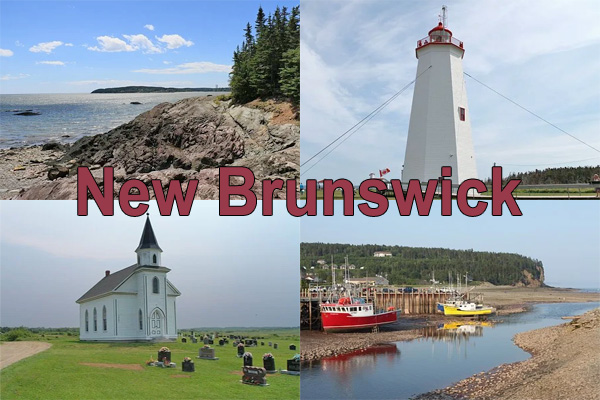Travel Canada
RomWell Travel Advisory
New Brunswick Inventions
 Scuba tank, James Elliot and Alexander McAvity, Saint John, 1839.
Scuba tank, James Elliot and Alexander McAvity, Saint John, 1839.
 Compound steam engine, Benjamin F. Tibbets, Fredericton, 1845.
Compound steam engine, Benjamin F. Tibbets, Fredericton, 1845.
 Snow blower, Robert Carr Harris, Dalhousie, 1870.
Snow blower, Robert Carr Harris, Dalhousie, 1870.
 Sardine cans, Henry T. Austin, Black’s Harbour, 1932.
Sardine cans, Henry T. Austin, Black’s Harbour, 1932.
 Clothes washer with roller wringer, John E. Turnbull, Saint John, 1843.
Clothes washer with roller wringer, John E. Turnbull, Saint John, 1843.
 Combined hot and cold water faucets, Thomas Campbell, Saint John, 1880.
Combined hot and cold water faucets, Thomas Campbell, Saint John, 1880.
 Crossword game, Edward R. MacDonald, Shediac, 1926.
Crossword game, Edward R. MacDonald, Shediac, 1926.
 Dump-box for trucks, Robert T. Mawhinney, Saint John, 1920.
Dump-box for trucks, Robert T. Mawhinney, Saint John, 1920.
 Ganong Brothers Ltd., St. Stephen, are the first in Canada to produce lollipops (1895), to use cellophane packaging (1920), to make peppermint rolls (1926), and to sell Valentine candy in heart-shaped boxes (1932).
Ganong Brothers Ltd., St. Stephen, are the first in Canada to produce lollipops (1895), to use cellophane packaging (1920), to make peppermint rolls (1926), and to sell Valentine candy in heart-shaped boxes (1932).
Did You Know?
Ganong Brothers Ltd., established in 1973 in St. Stephen, created the first chocolate and nut candy bar by individually wrapping pieces of chocolate and selling them for a nickel.
New Brunswick has more than 55 remaining covered bridges and Kings County is considered the Covered Bridge Capital of Atlantic Canada. The bridges that are standing today are living examples of the pride of craftsmanship, heritage, engineering and design of our forefathers.
The "Longest Covered Bridge in the World" is located in Hartland, New Brunswick, at 390 m. (1,282 ft.) long. The Hartland Bridge was constructed in 1901 by the Hartland Bridge Company and it was not originally built covered. The bridge was funded by tolls until it was purchased by the provincial government in 1906. The provincial government took over the ownership and maintenance of the bridge and removed the tolls. In 1920, two spans of the bridge collapsed due to Saint John's river ice. The bridge reopened in 1922 after construction to repair the structure, at which time the bridge was also covered, despite some local opposition. More about Hartland Covered Bridge...
New Brunswick has more than 60 lighthouses and is famous for its inland lighthouse system that dots its inland rivers.
New Brunswick has the warmest saltwater beaches in Canada.



